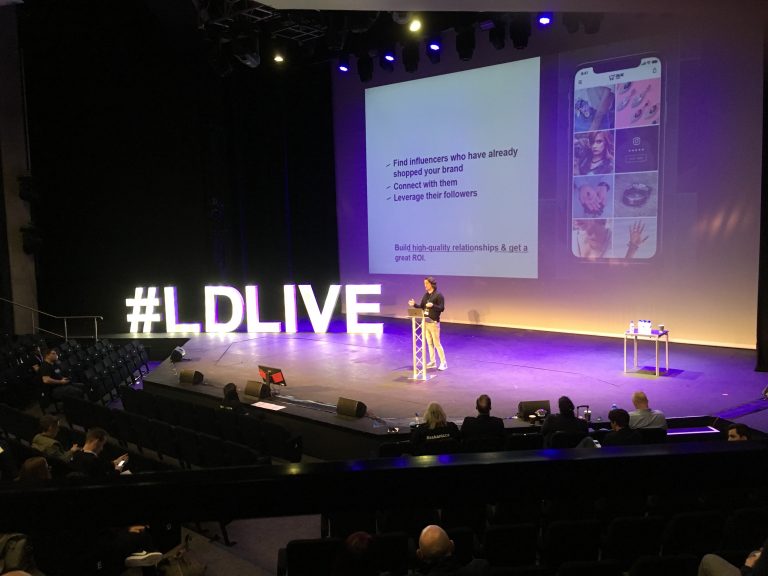5 Techniques to Amplify Your B2B Remarketing

According to Forbes, B2B customers are now progressing 70% of the way through the purchase funnel before engaging a sales representative (Forbes, Dec 2017). Your digital content is the key to securing that end sale, so delivering a consistent and informative message is essential.
Here we look at 5 techniques to get the most out of your B2B PPC remarketing campaigns.
1). Lead Users Down the Purchase Funnel
The key to moving users down the purchasing funnel is having different levels of landing page that fulfil each new need for a user.

You would generally follow these steps:
- Top of the Funnel – this is where a user is vague in their search and it would be a very informative page where the user comes to gleam more information. Depending on the business area it could be a slow burn in terms of securing the actual sale, but these pages are important to start harbouring the trust of individuals. For a top of the funnel page you could tie this in to site content such as whitepapers and guides.
- Middle of the Funnel – The user at this point is starting to show some interest in the product but is potentially shopping around for other options. At this point it is all about selling your product and brand as the superior option and you can use collateral such as case studies to support this. At this point it can also be a good time to put emphasis on your customer reviews. You can start to build remarketing lists at this point that pick up on little micro-moment points.
- Bottom of the Funnel – Finally you get to users who have been viewing and engaging with the middle of the funnel pages. They may have been looking at pricing options or downloading case studies and this is now the time to go in for the close. The landing page here is all about the user making that final conversion.
Each funnel should have a different cookie duration to reflect the stage the user is at. The further down the funnel the shorter the duration.
2). Align with Social Activity
Using a multi-channel approach, you can reach more users in more places and deliver a consistent message or story. One technique of joining social and AdWords together has been coined the ‘honey-pot’ strategy where you build highly targeted audiences on Facebook and capture these into a remarketing list in Google Analytics. Through this you are then able to re-target to this set of users across Google’s search and display networks.
The alternative approach to honey-pots is to create a story that is told across the platforms in a sequential strategy, all ending on Google’s search network when the user is actively searching for your product or service.
3). Focus on Content and Education
Research shows that 73% of B2B buyers engage with a case study and 82% rely on content in white papers when making their decision (Demand Gen Report), so getting those users to that content is a key part of moving the customer down the funnel.
This idea of using content to educate users is all about nurturing your bounced traffic, or traffic with low session durations. During their first visit to your site it becomes clear that they couldn’t find the answers they were looking for. By understanding the types of phrases these users are visiting the site through you can create custom landing pages promoting relevant and engaging content in the form of case studies, whitepapers and videos.
This content can also be used to promote brand awareness and build trust within the business and brand amongst potential customers.
4). Keep Ad Copy Fresh
One of the most important, and often overlooked aspects of remarketing is ensuring that your ads are kept fresh, and this is applicable across both the search and display network. One of the key indicators that your audience has become fatigued is your click through rate (CTR). If this is dropping, it can indicate that your ad copy is no longer effective.
Along with keeping ad copy fresh you also may want to review your frequency capping and audience list durations as these can also speed up the fatigue.
5). Understand Your Audience
While it is simple enough to bulk together users based on rules and criteria, such as users who visited three or more pages, the real key to success is delving deeper into these audience lists to create a layered remarketing approach.
By looking into your audience insights for each remarketing list you are able to create a more narrowed view of exactly who your customers are. You can learn what kind of content they have shown an interest in through in-market audience data as well as the demographic makeup.
Tip: Your ‘all converters’ is the most valuable
Google also shows you how your audiences interests and demographic make up compares to that of the country average.
All in all, in order to progress the user to the end of the funnel and engage them with a sales representative or make that purchase you need to deliver a continuous and informative message throughout their journey. Get in touch with the team at Anicca Digital to discuss your remarketing needs in more detail.



